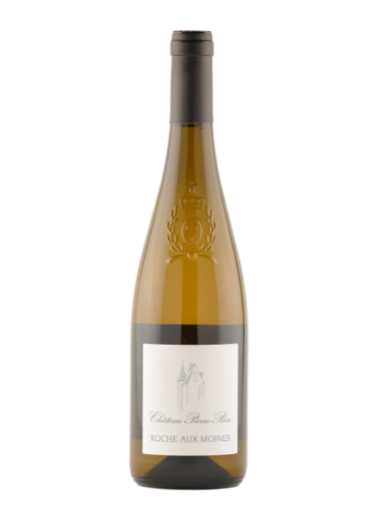Savennières
Roche aux Moines
The Roche aux Moines plateau is composed near the surface of rhyolite, an acidic volcanic rock formed from cooled magma. It is responsible for the orangey colour of the siliceous sandstone at the bottom of the slope. This first part is the least rocky (the topsoil is around 80cm thick).
Since the volume of water is strongly dependent on the thickness of the soil, the silica of the sandstone and the slope are responsible for the level of acidity and its vivacity. Continuing up the slope, a band of spilite (basic volcanism) at a depth of about 30 cm reinforces the mineral complexity from the sandstone. Without increasing acidity, it adds density to the structure of the wine.
Finally, the crimson schist at the top of the hillside with its thin layer of soil, brings roundness and fleshiness that are specific to this level of weathered schist and very poor rocky soil.
The Roche aux Moines site, on the edge of the Coulée de Serrant appellation, overlooks the Loire Valley and the small but most famous of Anjou’s winegrowing villages, Savennières, with its magnificent properties and imposing cedar parks.
| Appellation | Savennières |
| Varieties | 100% Chenin |
| Terroir | From top to bottom, crimson Ordovician schist, band of spilite with sandstone on top, resting on old rhyolite vents. Rocky soil (thin layer of topsoil) resulting in strong minerality. |
| Pairing suggestions | Appetizers, fish or scallops |









